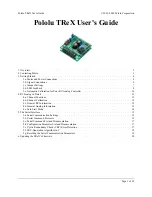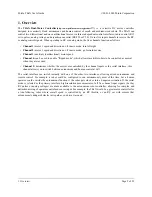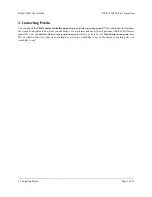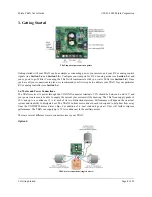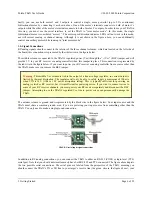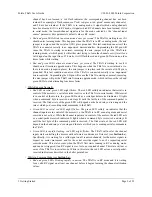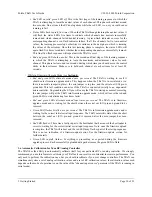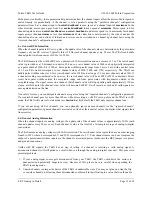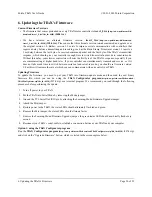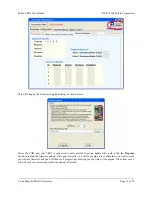
4. RC/Analog in Detail
This section provides a detailed overview of the RC and analog modes of operation. It explains how the TReX
processes its channel inputs and how those inputs influence the TReX when it’s in RC or analog mode.
Pololu TReX connected to an RC receiver
4.a. Channel Functions
The five input channels along the left side of the TReX accept either radio-controlled (RC) servo pulses or analog
voltages, depending on the position of the mode-selection jumper (or on the value of the “channel input source”
parameter if the TReX is in serial mode). When not in serial mode, the TReX acts on the five channels as follows:
•
Channel 1:
If mix jumper is in place, turn left/right at the specified speed; if mix jumper is off, set motor 1
direction and speed.
•
Channel 2:
If mix jumper is in place, go forward/reverse at the specified speed; if mix jumper is off, set
motor 2 direction and speed.
•
Channel 3:
Set auxiliary motor speed (aux. motor is unidirectional).
•
Channel 4:
Enable/disable
flipped mode
. Flipped mode causes the TReX to treat motor 1 as motor 2 (and
vice versa), and to swap its notions of forward and reverse for each motor. The result is that a differential-
drive robot will behave as normal when inverted if flipped mode is enabled. This channel acts like a switch
that gets flipped when the channel value falls below a certain threshold. If your controller is not calibrated,
this channel may not function as intended.
•
Channel 5:
Enable/disable
serial override
. Serial override gives serial control of the motors for as long as
channel 5 enables it. When serial override is first enabled, each motor is set based on its most recently
received motor command, even if that command occurred while serial override was disabled. Channels 1, 2,
and 3 will not affect the motors while serial override is active (unless your serial control source is reading the
values of those channels and issuing its commands based in part on them). This channel acts like a switch
that gets flipped when the channel value falls below a certain threshold. If your controller is not calibrated,
this channel may not function as intended.
4.b. Channel Calibration
As was covered in
Section 3.e
, you can automatically calibrate your TReX for your RC or analog controller. If this
doesn’t prove sufficient for your needs, you can manually calibrate your TReX for your controller by specifying the
minimum
,
neutral
,
maximum
, and
deadband
values for each channel. The TReX can simultaneously store both a
set of RC and a set of analog calibration parameters. The calibration parameters are in the units of the raw channel
values: 0.4 us for RC, 4.89 mV for analog. In general, these parameters affect how the TReX interprets the channel
input values.
Pololu TReX User's Guide
© 2001–2009 Pololu Corporation
4. RC/Analog in Detail
Page 12 of 22

